How can ordinary investors participate in DePIN?
As a highly anticipated future crypto infrastructure, DePIN is expected to further raise the ceiling for cryptocurrencies and become a new engine for generating value in the crypto space.


DePIN Concept
DePIN (Decentralized Physical Infrastructure Network) refers to networks that connect physical hardware devices. These networks introduce cryptocurrency rewards to coordinate, incentivize, and protect network members, enabling numerous devices within the network to operate autonomously for a specific purpose, such as GPU computing resource platforms or building a global network bandwidth infrastructure. For example, a GPU computing resource platform or the construction of a global network bandwidth.
Generally, DePIN leverages blockchain and IoT technologies to create, operate, and maintain physical infrastructure in the real world. As a crucial component that bridges the digital and physical worlds through cryptocurrency technology, DePIN will further consolidate the status of cryptocurrency as an important resource.
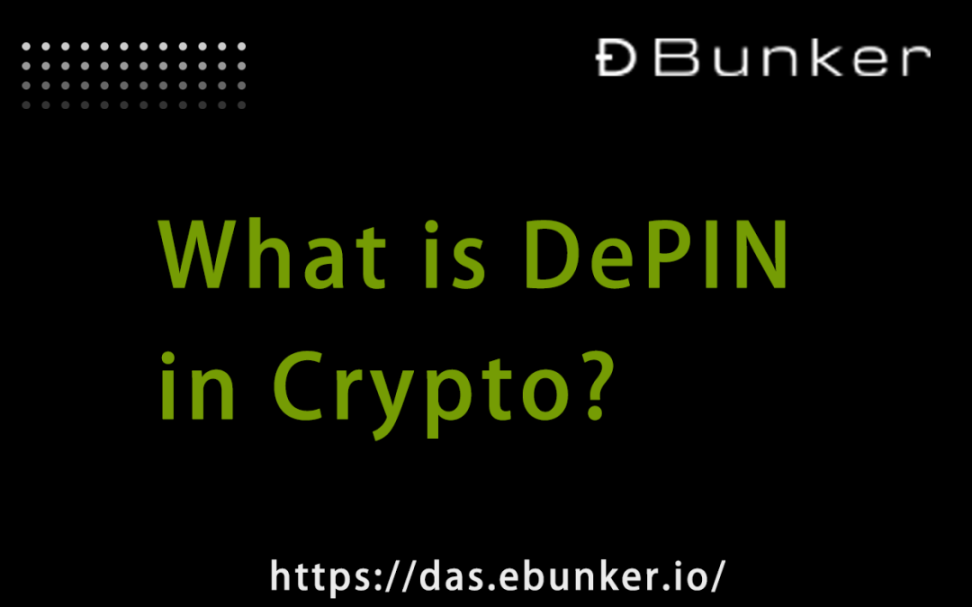
The core of DePIN projects is to create democratized technology to compete with or even replace centralized technology products. Participants who provide the necessary hardware for the network can receive cryptocurrency rewards.
Helium is an early example of DePIN. The project launched a decentralized wireless network (DeWi) in 2019, supported by individuals operating interconnected hardware devices worldwide. Since then, other projects have followed suit and established various infrastructure solutions to support 5G mobile networks, connect cars, and even collect air quality data.
IO.net is also a recently emerging representative of DePIN. It has designed a GPU computing platform, calling on idle GPUs worldwide to join the platform and providing GPU rental services for global AI and gaming startups, thereby improving asset utilization and reducing usage costs.

How DePIN Works
DePIN is built on the concept of the Internet of Things (IoT), which automates processes by connecting multiple physical objects. The normal operation of a DePIN network typically requires the following conditions:
Hardware:Physical components that connect the network to the physical world, such as hotspots for wireless networks, extra space on hard drives for storage networks, idle GPUs, etc.
Hardware Operators:Users who purchase (or rent) hardware and connect it to their respective networks.
Token:Cryptocurrency specific to each project is provided to hardware operators, and each token has different economic characteristics according to the rules set by its project.
End Users:Users of the infrastructure supported by network hardware. For example, end users may be groups who prefer to rely on DePIN projects rather than corporate WiFi signals and are willing to pay to receive services provided by the network.
From the above conditions, it can be seen that the threshold for ordinary people to participate in DePIN is not low. So, how can ordinary investors participate in DePIN more easily?In addition to investing in and trading tokens related to DePIN projects, one can also participate in DePIN by purchasing NFTs representing physical devices, thus obtaining returns in the simplest way.

Introduction to IO.NET
IO.NET is a decentralized GPU network designed to provide computing power for machine learning applications.As the first and only GPU DePIN, IO.NET is optimized for machine learning and connects computing power providers and users, offering accessibility and profitability for all parties.
On one hand, IO.NET achieves fair access to computing power by calling on over 1 million GPUs from independent data centers (the average utilization rate of independent data centers in the US is only 12% to 18%), crypto miners, consumer idle GPUs, and crypto projects (such as Filecoin or Render), significantly reducing costs compared to traditional cloud computing providers.
On the other hand, traditional cloud providers like AWS usually require detailed KYC information and long-term contracts. Obtaining GPU computing power from traditional providers often takes weeks, but IO.NET has no such restrictions, allowing users to access and deploy within 90 seconds. Therefore, the combined advantages of speed and cost make IO.NET several times more efficient than traditional cloud products.
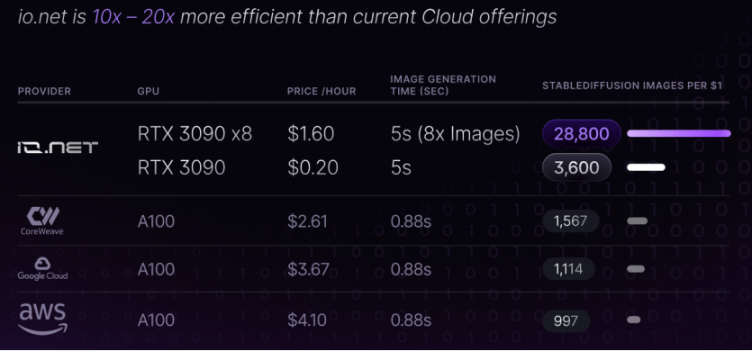
As the demand and popularity of AI model computation increases, more and more individuals and enterprises are engaging in AI processing activities, and costs are becoming increasingly expensive. The market needs an efficient platform to simplify and optimize the AI learning process. In addition, the scale of unused computing power in the form of distributed GPUs is enormous. IO.NET develops applications to cater to this market demand, providing users and enterprises with convenient and secure solutions to efficiently manage the operation and revenue of their hardware.
IO.NET's target customers are any users who wish to create or operate machine learning models or AI applications. Given the explosive growth of "no-code tools" (such as Predibase) and user-friendly model creation platforms (such as Hugging Face), the market potential is enormous.

Introduction to IO Worker
IO Worker is one of the core products of IO.NET, and its development principles emphasize real-time updates, strict security, simplified operations, and a user-friendly interface.IO Worker provides users with real-time data, operations, and information about connected network devices through various pages, enabling users to monitor them and perform quick actions.
Device Details Page:Users can access the monitoring page to see an overview and detailed view of the selected device. The platform obtains and provides real-time data on traffic transmission, connection status, connected services, and uptime. Users can track all previous jobs performed by the device and its entire notification history.
Earnings and Rewards Page:Allows users to manage expense accounts related to operations, track the history of their work and income, and check every transaction on SOLSCAN.
Add New Device Page:Allows users to connect their devices in the simplest way (just a few steps).

Introduction to IO.NET GPU worker
Due to the increasing technical difficulty of purchasing and deploying GPU devices in the market, it is not easy for ordinary users to purchase or rent GPU devices to connect to IO.NET. As a brand relying on Ebunker, Dbunker has a large-scale node deployment resource network and a vast GPU device network, which can represent users in hosting and deploying GPU devices, providing users with the best solutions and eliminating barriers in this field.
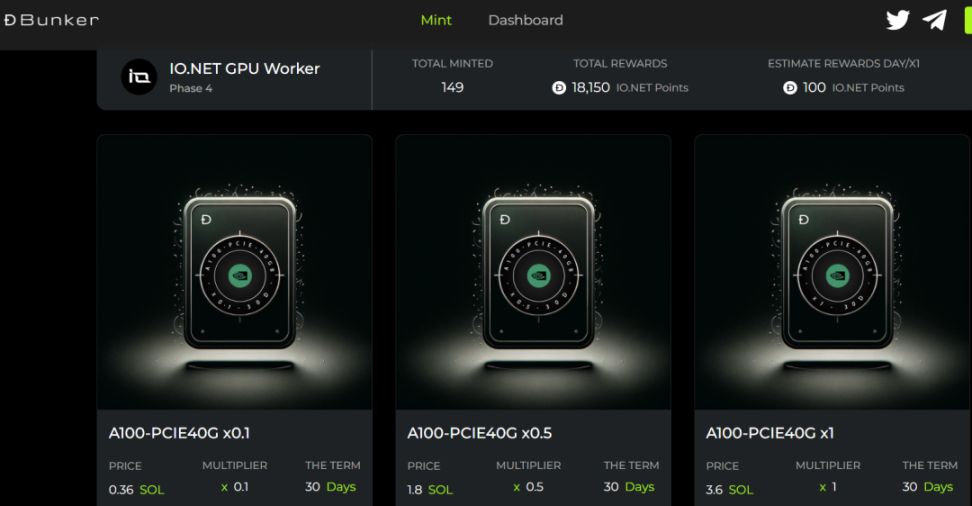
The way to achieve the above solution is by purchasing an IO.NET GPU worker, an NFT product jointly launched by IO.NET and Dbunker, representing a physical GPU device. Owning this NFT means owning a specific model of Nvidia A100 graphics card. Like other DePIN devices, Dbunker will issue Dbunker points to customers, representing the mining points of these A100 GPUs on IO.net.
Users have rights related to transactions, participation, and earning profits from the device, making it very suitable for users who lack the ability to independently deploy graphics cards to participate in the DePIN industry in a simple way.
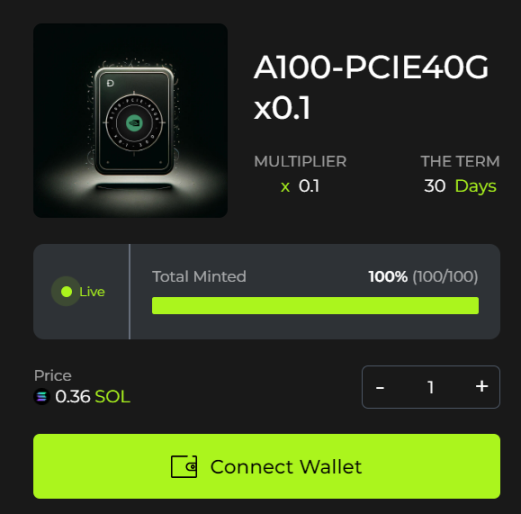
Dbunker has proposed the innovative concept of "DePIN as a Service," aiming to lower the threshold for users to participate in DePIN, bring more people into the DePIN world, and empower the DePIN ecosystem. Currently, IO.NET GPU worker has launched four batches of A100 graphics card products, with a cumulative value of over 7 million USD, all of which have been sold out.
As a highly anticipated future crypto infrastructure, DePIN will further raise the ceiling for cryptocurrencies and become a new engine for cryptocurrency value creation.
Ebunker, a long-term Ethereum advocate, closely follows Ethereum technology development, proposal upgrades, and community changes, sharing research and insights on key Ethereum sectors such as Staking, L2, and DeFi.
Currently, Ebunker includes businesses such as Ebunker Pool (a non-custodial Ethereum staking pool) and Ebunker Venture (Ethereum maximization venture capital).
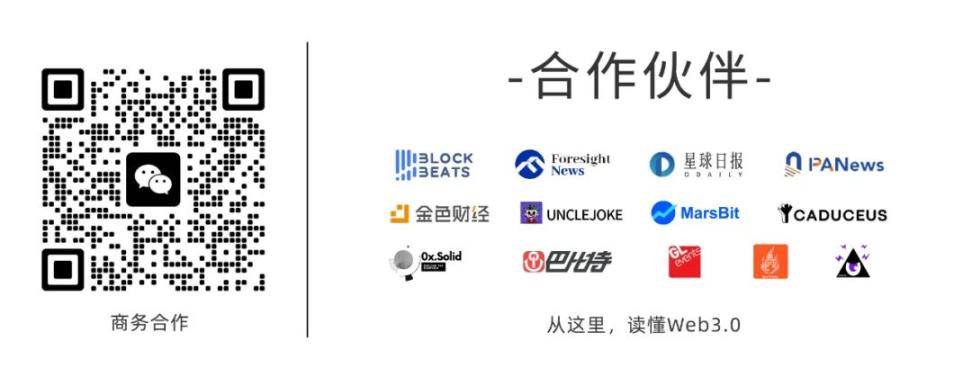
Click "Read Original" to visit Dbunker
Disclaimer: The content of this article solely reflects the author's opinion and does not represent the platform in any capacity. This article is not intended to serve as a reference for making investment decisions.
You may also like
4 Catalysts That Could Boost Bitcoin
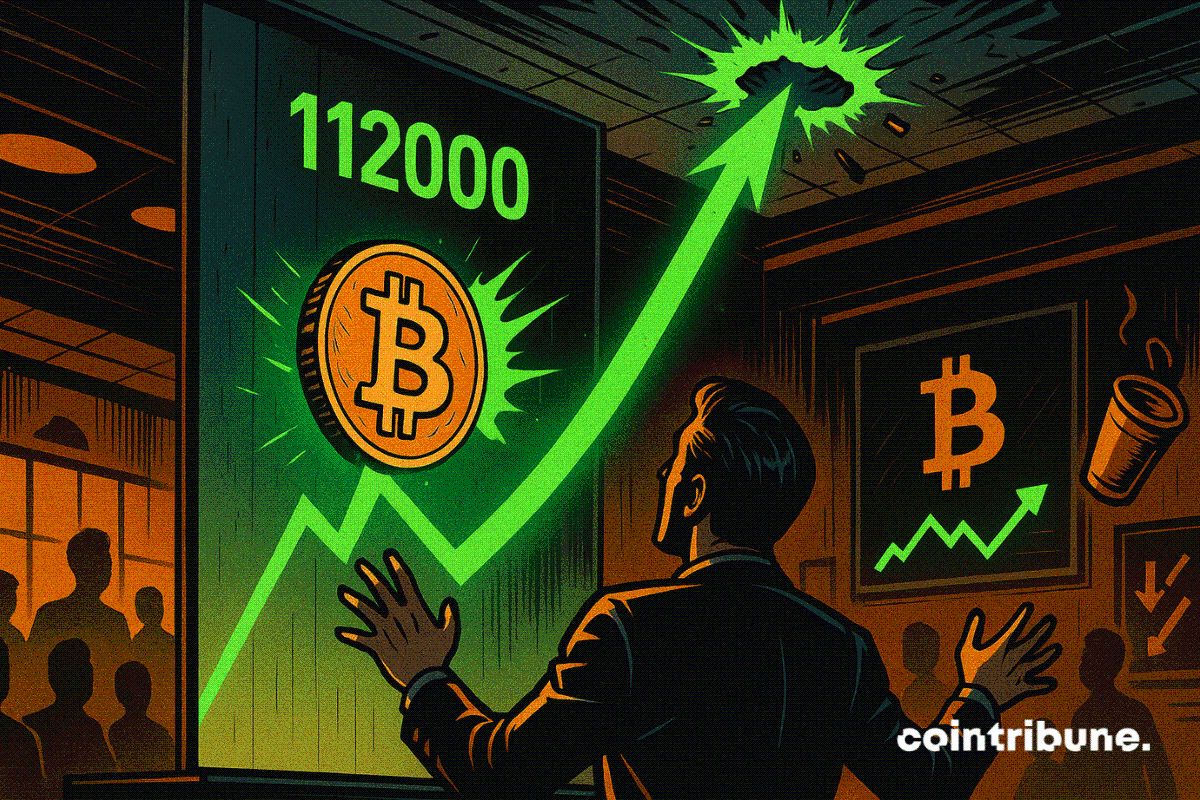
Vitalik Buterin Charts ‘Targeted Growth’ as Ethereum Hits 60M Gas Limit Milestone
![Crypto News Today [Live] Updates On November 27,2025 : Bitcoin Price,Grayscale Zcash ETF,Upbit Hack and More……](https://img.bgstatic.com/multiLang/image/social/03300f325ed4211e8f2d9d00885d0bcc1764232946103.webp)
Upbit Hit by $36M Solana Hack, Vows Full Reimbursement After Major Breach
